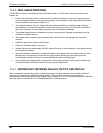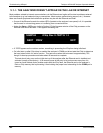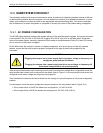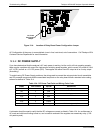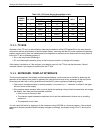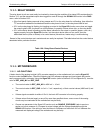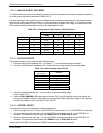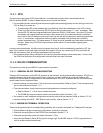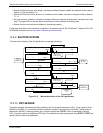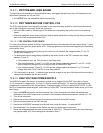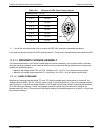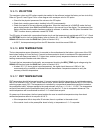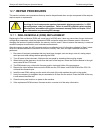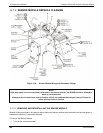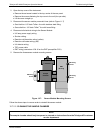
Troubleshooting & Repair Teledyne API M100E Analyzer Operation Manual
274
12.6.7. CPU
There are two major types of CPU board failures, a complete failure and a failure associated with the
Disk-On-Module (DOM). If either of these failures occurs, contact the factory.
For complete failures, assuming that the power supplies are operating properly and the wiring is intact, the
CPU is faulty if on power-on:
The watchdog LED on the motherboard is not flashing, either the motherboard or the CPU is faulty
There is no activity from the primary RS-232 port on the rear panel even if “? <ret>” is pressed. Note
that the RS-232 port has programmable baud rates from 200 to 115200 baud. Since the CPU board
remembers the programmed baud rate even when power is off, this means that there is no default
baud rate for the port when the instrument boots up, the rate will be whatever it was last programmed
to be. In some cases, configuration memory might be corrupted, and the baud rate could be a
random unrelated value. For these reasons, it is best to test all possible baud rates when performing
this test. Refer to the RS-2323 Communication section below, for more details regarding port
configuration.
In some rare circumstances, this failure may be caused by a bad IC on the motherboard, specifically U57, the
large, 44 pin device on the lower right hand side of the board. If this is true, removing U57 from its socket will
allow the instrument to start up but the measurements will be invalid.
If the analyzer stops during initialization (the vacuum fluorescent display shows some text), it is likely that
the DOM, the firmware or the configuration and data files have been corrupted.
12.6.8. RS-232 COMMUNICATION
This section provides general $S-232 communication information.
12.6.8.1. GENERAL RS-232 TROUBLESHOOTING
Teledyne API’s analyzers use the RS-232 protocol as the standard, serial communications protocol. RS-232 is a
versatile standard, which has been used for many years but, at times, is difficult to configure. Teledyne API
conforms to the standard pin assignments in the implementation of RS-232. Problems with RS-232 connections
usually center around 4 general areas:
Incorrect cabling and connectors. This is the most common problem. Refer to Figure 7-4 for connector and
pin-o
u
t information and Section 7.1.3.
The co
mmunications (baud) rate and protocol parameters are incorrectly configured.
Refer to Section 7.1.10 on how to set the baud rate.
The COMM p
ort communications mode is set incorrectly (refer to Section 7.1.9).
If a modem is used, ad
ditional configuration and wiring rules must be observed. Refer to Section 7.3.2.6.
Inc
orrect setting of the DTE - DCE Switch is set correctly, refer to Section 7.1.5.
12.6.8.2. MODEM OR TERMINAL OPERATION
These are the general steps for troubleshooting problems with a modem connected to a Teledyne API analyzer.
Check cables for proper connection to the modem, terminal or computer.
Check the correct position of the DTE/DCE as described in Section 7.1.5.
Che
ck the correct setup command (refer to Section 7.3.2.6).
Verify that th
e Ready to Send (RTS) signal is at logic high. The M100E sets pin 7 (RTS) to greater than 3
volts to enable modem transmission.
04515F DCN6048



